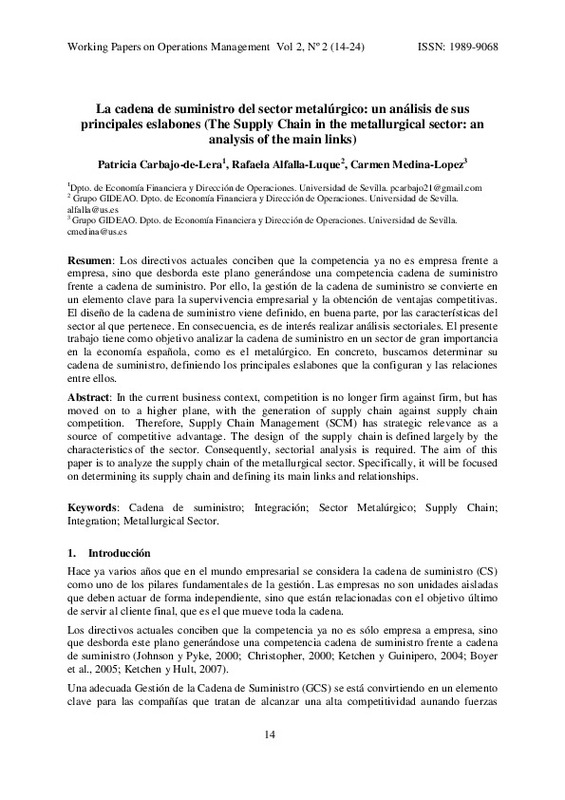JavaScript is disabled for your browser. Some features of this site may not work without it.
Buscar en RiuNet
Listar
Mi cuenta
Estadísticas
Ayuda RiuNet
Admin. UPV
Desde el lunes 3 y hasta el jueves 20 de marzo, RiuNet funcionará en modo de solo lectura a causa de su actualización a una nueva versión.
La cadena de suministro del sector metalúrgico: un análisis de sus principales eslabones (The Supply Chain in the metallurgical sector: an analysis of the main links)
Mostrar el registro completo del ítem
Carbajo-De-Lera, P.; Alfalla-Luque, R.; Medina-Lopez, C. (2011). La cadena de suministro del sector metalúrgico: un análisis de sus principales eslabones (The Supply Chain in the metallurgical sector: an analysis of the main links). Working Papers on Operations Management. 2(2):14-24. https://doi.org/10.4995/wpom.v2i2.867
Por favor, use este identificador para citar o enlazar este ítem: http://hdl.handle.net/10251/15499
Ficheros en el ítem
Metadatos del ítem
| Título: | La cadena de suministro del sector metalúrgico: un análisis de sus principales eslabones (The Supply Chain in the metallurgical sector: an analysis of the main links) | |
| Otro titulo: |
|
|
| Autor: | Carbajo-de-Lera, Patricia Alfalla-Luque, Rafaela Medina-Lopez, Carmen | |
| Fecha difusión: |
|
|
| Resumen: |
[EN] In the current business context, competition is no longer firm against firm, but has
moved on to a higher plane, with the generation of supply chain against supply chain
competition. Therefore, Supply Chain Management ...[+]
[ES] Los directivos actuales conciben que la competencia ya no es empresa frente a empresa, sino que desborda este plano generándose una competencia cadena de suministro frente a cadena de suministro. Por ello, la gestión ...[+]
|
|
| Palabras clave: |
|
|
| Derechos de uso: | Reserva de todos los derechos | |
| Fuente: |
|
|
| DOI: |
|
|
| Editorial: |
|
|
| Versión del editor: | https://doi.org/10.4995/wpom.v2i2.867 | |
| Tipo: |
|








